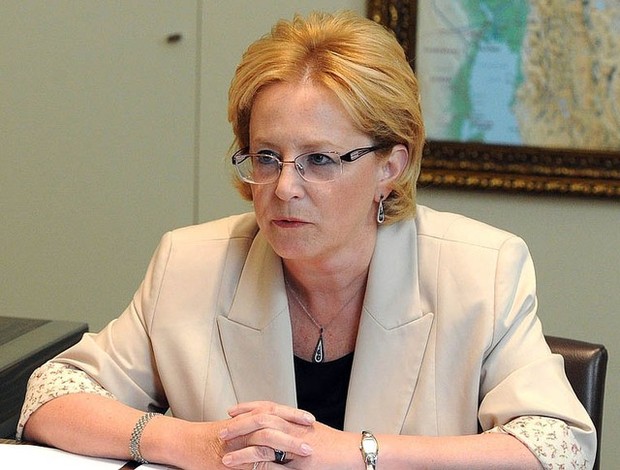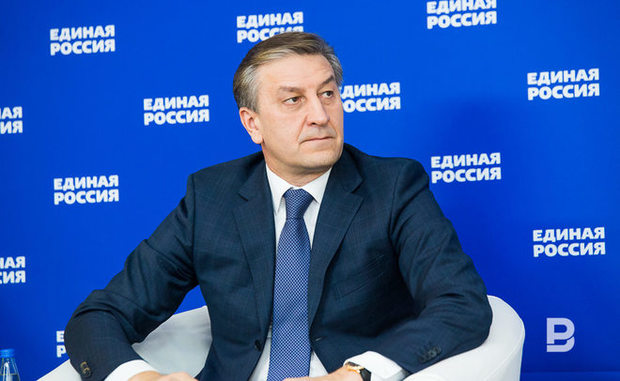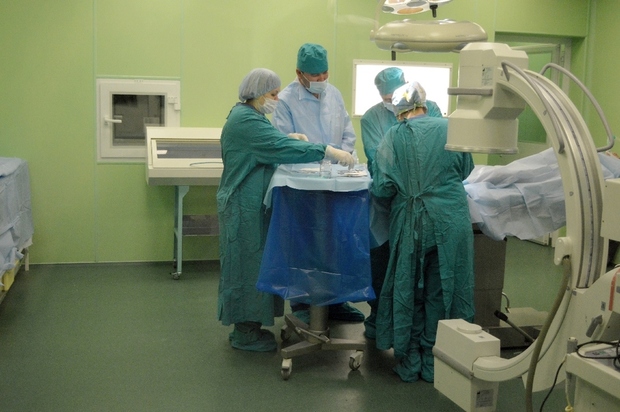Joining the fund: high-tech medical care financing model changes in Russia
Realnoe Vremya continues the topic of financial novelties that came into effect on 1 January this year. The transition of high-tech medical care, including the care that is not in the Basic Compulsory Medical Insurance Programme, to financing from the budget of the Compulsory Medical Insurance Fund. Experts of the newspaper have diametrically opposed views while estimating the efficiency and timeliness of the novelty.
Closer to patient
Vladimir Putin offered to change the financial model of high-tech medical care in December 2015 during the Address to the Federal Assembly. The president said about significantly grown volumes of high-tech medical care (from 60,000 operations in 2005 to 715,000 in 2014). However, he noted the fact that the majority of high-tech operations are performed in federal clinics whose directors are concerned about insufficient financing: ''The system of Compulsory Medical Insurance is territorial. First of all, it supports territorial health centres.''
It should be reminded that the submersion of high-tech medical care or, to be more precise, more distributed kinds of such help, to the system of Compulsory Medical Insurance started in 2014. Federal clinics got the most difficult and resource-intensive methods. In 2015, the latter offered over 70% of all types of high-tech medical care and only 21% of the most disseminated high-tech medical care methods included in the Compulsory Medical Insurance Programme. This division, according to the information given by head of the Ministry of Health of the Russian Federation Veronika Skvortsova during her speech at the meeting of the Russian president with the government members in November last year, enables to considerably augment the volumes of high-tech medical care in comparison with 2013 when the aid was completely financed by the budget: the volume of high-tech medical aid grew 1,5 times by the mid-2015 – from 505 ''nominal units'' in 2013 to 823,000 in 2015. Last year, over 900,000 patients were treated with high-tech medical care methods. At the same time, mainly the most popular high-tech medical care methods, for instance, heart stents (the number of this kind of operations has increased threefold since 2013) or replacement arthroplasty (+44% for two years) enabled this growth. The Russian Ministry of Health separately notes that IVF operations grew 3,6 times. As a result, 30,000 new Russian citizens were born in 2015.

Deficit of diagnosis
''In fact, the president stressed the necessity to transit all high-tech medical care, not only the part included in the Basic Compulsory Medical Insurance Programme,'' the Russian 7th State Duma deputy Airat Farrakhov, who headed the Ministry of Health of Tatarstan from 2007 to 2013, explained the author of the article in a phone talk. ''Two positions prevailed while carrying out the head of the country's instructions: either to include all high-tech medical care to the system of Compulsory Medical Insurance or conserve the current principle of budget financing by creating a special federal part in the system of Compulsory Medical Insurance.''
All in all, the second point of view won. As the amendments to the Law on Compulsory Medical Insurance (the corresponding law was adopted by the Russian president in July last year), a new financing model of more complicated, resource-intensive and, therefore, expensive high-tech medical care that is not included in the Basic Compulsory Medical Insurance Programme will be financed by the Compulsory Medical Insurance Fund from 1 January.
It should be noted that the budget deficit of the Federal Compulsory Medical Insurance Fund for 2017 was approved at 29 billion rubles, for 2018 – it was 70,6 billion rubles (at the same time, the Compulsory Medical Insurance Fund is expected to become profitable by 45,1 billion rubles in 2019 by attraction of the funds that were not used before). The deficit of the Tatarstan territorial office of the Compulsory Medical Insurance Fund for 2017 was approved at 47,2 million rubles. Considering the order of numbers, we can presuppose that lawmakers will find it more difficult to balance the programme of state guarantees to meet the population's need for medical care, including high-tech.
The willing horse carries the load?
The regions investing a big amount of their own funds to finance high-tech medical care will ''suffer'' the most when provisions of the law come into effect.
''The republic together with Moscow, Saint Petersburg and Krasnodar Krai are traditionally in the top 4 in terms of both the volume of high-tech medical care and costs per patient. Moreover, the regional money accounts for a big share of these costs,'' Farrakhov continues. ''But Moscow, Saint Petersburg and Krasnodar have a greater number of federal clinics that receive the greatest volume of financing of high-tech medical care types. What is more, we should consider that the patients living in these cities receive big volumes of high-tech medical care in the federal clinics in these cities. Tatarstan that has never had any federal medical organisation historically. It provides all types of high-tech medical care by means of its clinics.''

Indeed, systematic decisions, including the organisational decision that significantly affected the state of the sector in the region, were made during the action of the Health Modernisation Programme in Tatarstan. For instance, in 2012, the republic was figuratively divided into three zones – south-eastern, central and Zakamye. Each of them had the most important and prospective clinics that were equipped like federal organisations where the best specialists came to work, including from other regions of the country, and that offered more difficult types of high-tech medical care. In Airat Farrakhov's opinion, the strategy chosen by the region allowed to achieve very high results both in volumes of high-tech medical care and objective indicators like infant mortality.
According to the statistics of the Ministry of Health of Russia, the country has 142 out of 919 federal clinics in total that offer high-tech medical care. And their financing has a separate line in the budget of the Compulsory Medical Insurance Fund. It was 84 billion rubles for 2017. Moscow is ready to expend only 6 billion rubles to regions that spend their own money to finance high-tech medical care offered in clinics of these regions.
''The distribution formula is the following,'' Airat Farrakhov explains. ''All regions of the federation make their proposals on financing of high-tech medical care that is not included in the basic programme by the end of the year. The total indicator is divided into the sum given by the federal centre – it is about 6 billion rubles (the corresponding appendix is attached in the Federal Law on Budget of the Compulsory Medical Insurance Fund). And it is distributed among the regions proportionally to their investments. In other words, the more a region invests, the more money it gets from the federal budget.''
According to data of the Ministry of Health of Tatarstan, Tatarstan will expend 2 billion rubles to co-finance high-tech medical care that is not included in the Basic Compulsory Medical Insurance Programme (in addition, over 1 billion rubles is going to be spent on those types of high-tech medical care that joined the basic insurance programme from 2017). By 19 January, the accurate sum planned to be given to the republic for the above-mentioned purposes from the federal budget was unknown, though we can say this sum will be many times higher than the average sum in Russia without waiting for exact numbers. Basing on the experience of previous years, we can be sure that it will be incomparable with the region's own costs on the financing of high-tech medical care. In 2015, the costs of the regional budget on high-tech medical care were almost 1,8 billion rubles. At the same time, the region got federal subsidies equal to 212,8 million rubles. Last year, the regional treasury gave 2 billion rubles for corresponding services, while the federal one sent just 369 million rubles.
We should mention that last year five Tatarstan clinics – Republic Clinical Hospital, Children's Republican Clinical Hospital, Interregional Clinical and Diagnostic Centre, Republican Clinical Oncology Centre and Naberezhnye Chelny Emergency Hospital – joined the list of medical organisations that offer medical care to both residents of their region and people who come to receive treatment from other regions. In 2016, 350 people from other regions received medical care in regional medical organisations at more than 73 million rubles.

Questions remained
Experts' views on the new high-tech medical care financing model are completely different.
For instance, chairman of the Compulsory Medical Insurance Fund Natalia Stadchenko thinks that transition of such help to insurance principles is not only justified but also necessary:
''Patients will only win if targeted insurance payments are complemented by money from budgets of different levels. And centralisation of the funds including from different sources in a one-direction medical care financing will strengthen the financial discipline, increase the transparency of calculations and optimise the control of spending money in the health system.
Director of Institute for Health Economics of Higher School of Economics Larisa Popovich thinks that the health system can face difficulties in realisation of provisions of the law only in one case – if regions want to leave the most difficult patients in the hunt for financing:
''High-tech medical care whose considerable part turned from high-tech to specialised is well financed by the budget. Knowing that, territories can remain responsible for the treatment of the most difficult patients instead of sending them to federal centres. In this case, the quality of service is under question. However, a possible risk of reduction of medical care quality because of regions' overestimation of their own capabilities was mentioned many times. But nobody has really estimated whether it worked out.
Airat Fattakhov, in turn, is convinced that the high-tech medical care financing model needs to be improved, to put it mildly:
''I am convinced that the government of the Russian Federation and lawmakers will return to the financing of high-tech medical care very soon, including because the current model doesn't guarantee any respect for patients' right in conditions of the Compulsory Medical Insurance. The quality of high-tech medical care within the Compulsory Medical Insurance Programme is controlled by insurance companies because clients pay for it. Estimated financing, it is how federal clinics get money, doesn't presuppose enough control of somebody. It will seriously scotch the development of health in general and cause numerous reproaches from both patients and people working in the health system. Finally, privileges created for federal clinics within the current financing model will negatively affect the competition in the sector,'' the expert concludes.